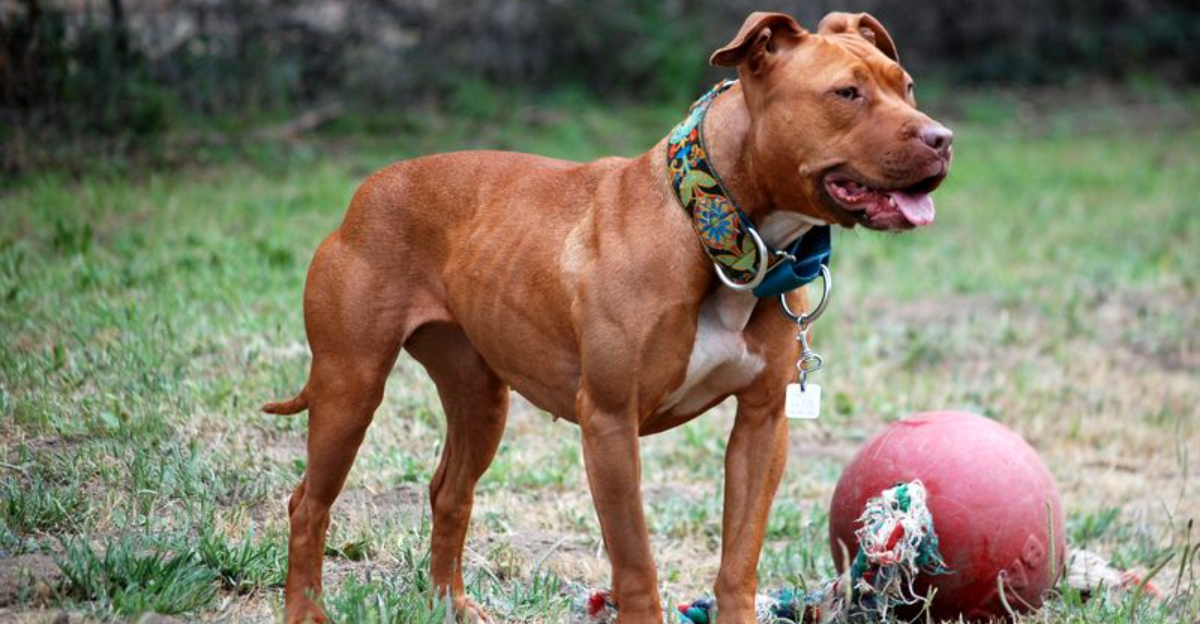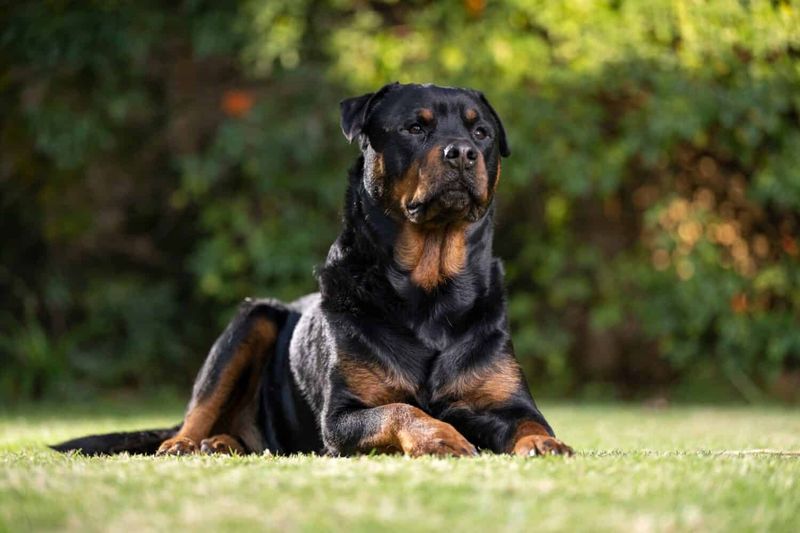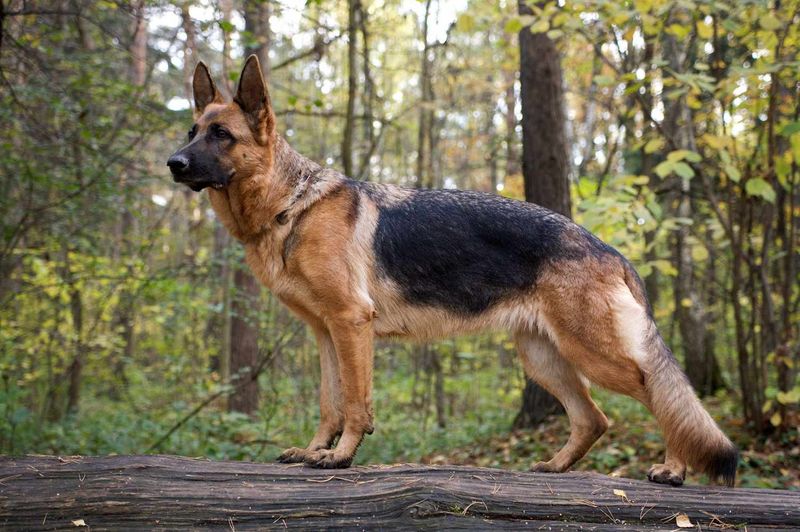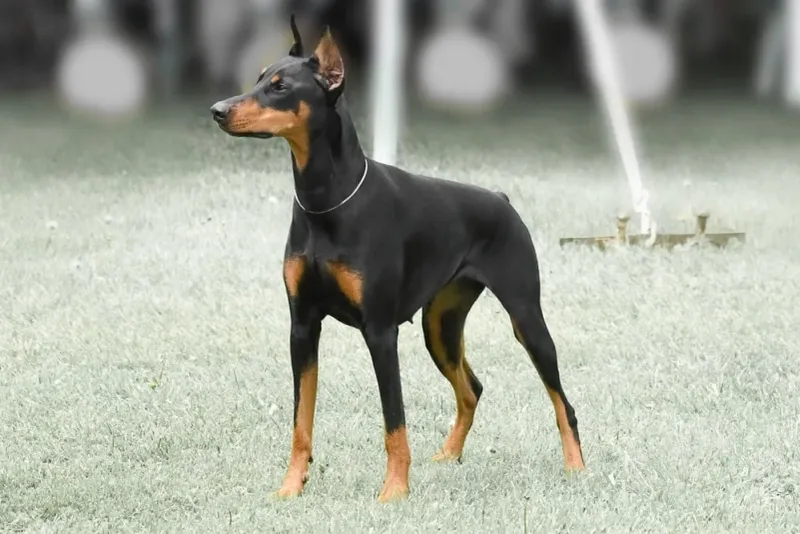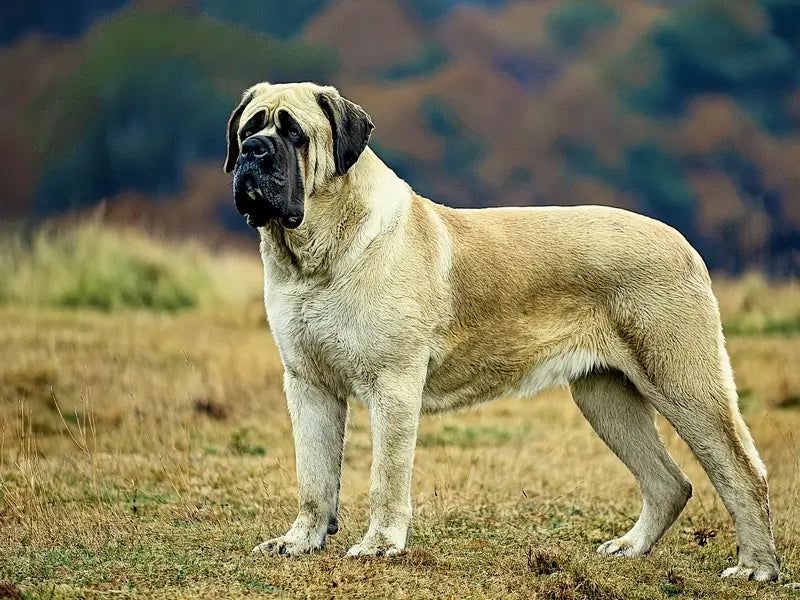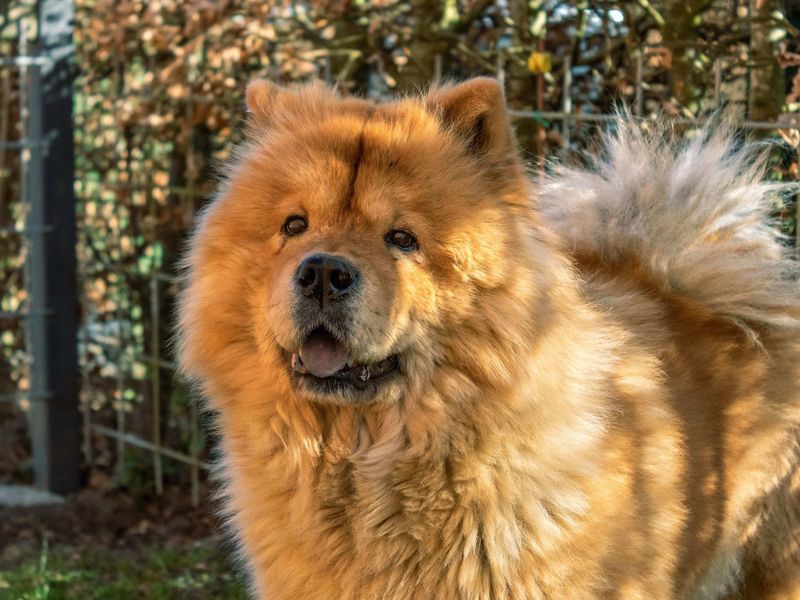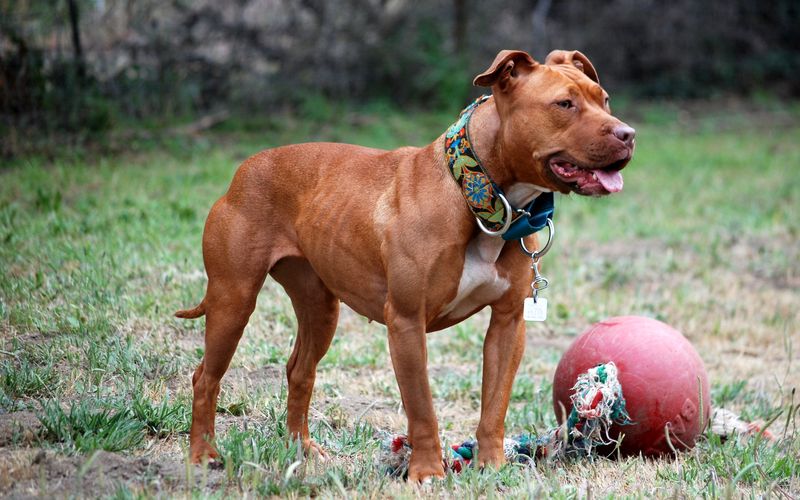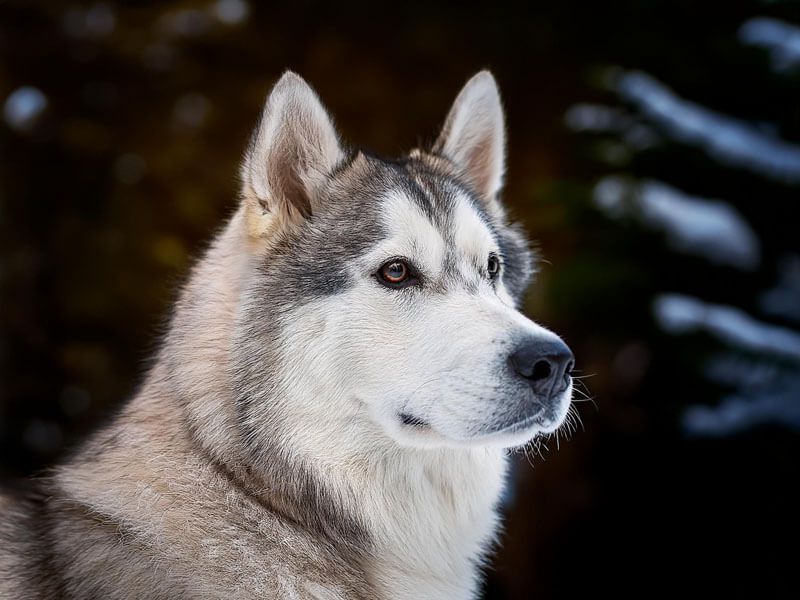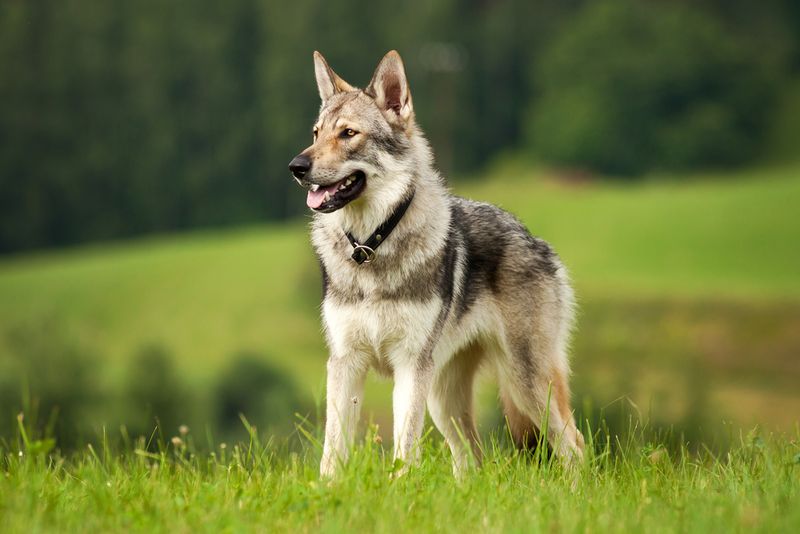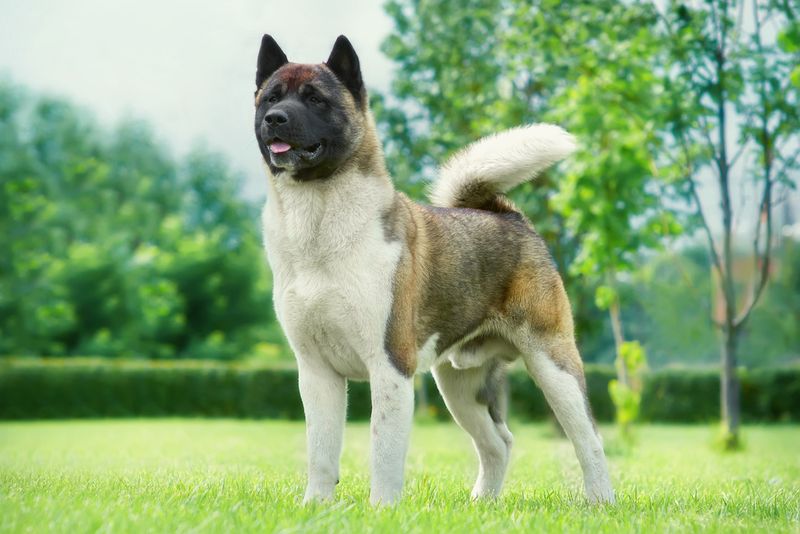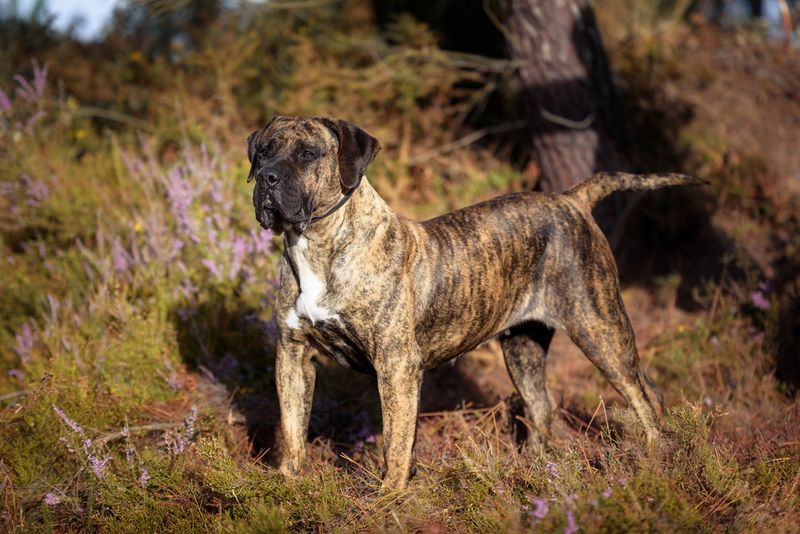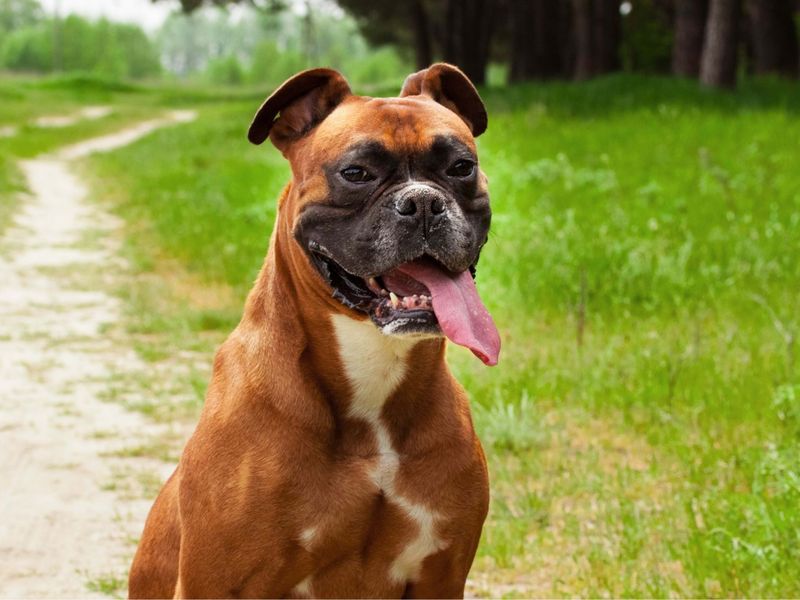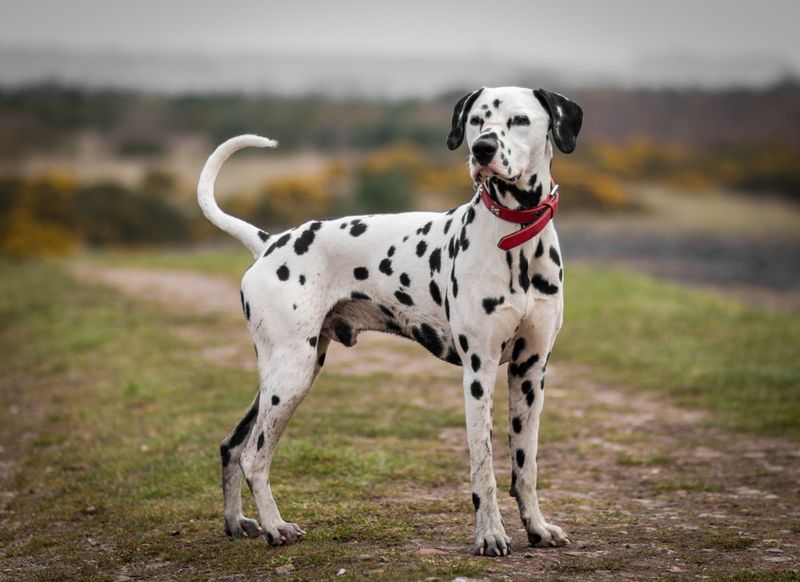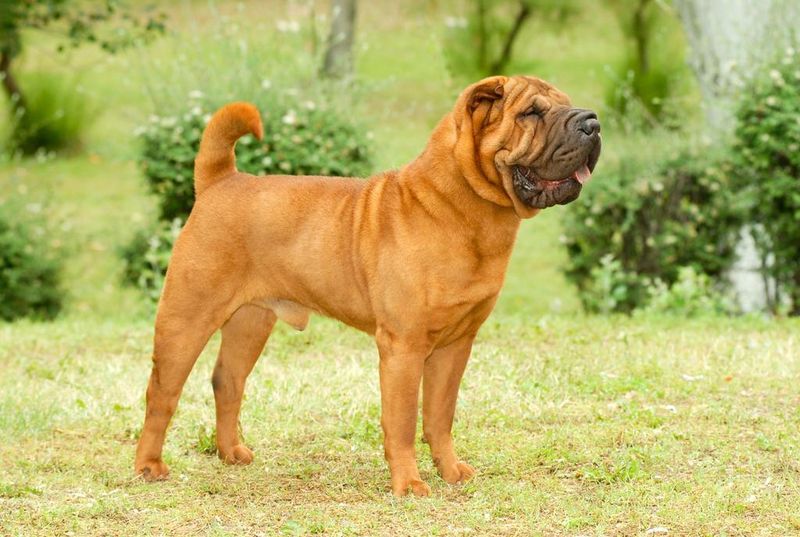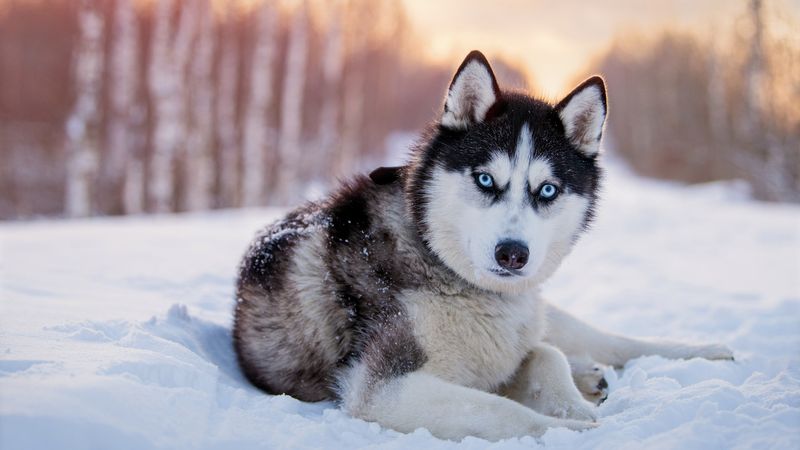Some dog breeds are labeled as “high risk” by insurance companies due to their perceived aggressiveness or past incidents. This can affect homeowners’ insurance policies and sometimes lead to additional costs. Understanding these breeds can help current and potential dog owners make informed decisions. Here’s a detailed look at fifteen such breeds often considered risky by insurers.
Rottweiler
With roots tracing back to Roman drover dogs, Rottweilers are known for their strength and protective instincts. These traits make them excellent guard dogs.
Their imposing presence and loyalty can sometimes be mistaken for aggression. However, they are usually calm and good-natured with proper training.
Insurance companies often categorize Rottweilers as high risk due to their size and territorial instincts, which can lead to increased insurance premiums.
German Shepherd
The intelligent German Shepherd is a favorite in police and military roles due to its quick learning and adaptability. Their courage and protective nature are unmatched.
This noble breed is also a loving family dog, known for its loyalty and trainability. However, its strong protective instinct can be misunderstood.
Insurance companies sometimes see German Shepherds as high risk, mainly because of incidents related to their guarding behaviors.
Doberman Pinscher
Originally bred for protection, the Doberman Pinscher is synonymous with loyalty and alertness. Their sleek bodies and cropped ears add to their intimidating presence.
Despite their protective nature, they are often affectionate and gentle with their families. Proper socialization is key to managing their instincts.
Insurance providers consider Dobermans high risk due to potential aggressive tendencies, affecting homeowners’ premiums.
Mastiff
Known for their enormous size and gentle eyes, Mastiffs are gentle giants. Their calm demeanor belies their impressive stature, making them ideal family pets.
Their historical role as guard dogs contributes to their protective instincts. While typically docile, their size alone is a concern for insurers.
Mastiffs are often labeled high risk by insurance companies due to their potential for causing injury if not properly managed.
Chow Chow
With its lion-like mane and independent nature, the Chow Chow is both distinctive and aloof. Originally from China, they are known for their dignified presence.
Chow Chows can be reserved and wary of strangers, requiring early socialization to temper their wariness. Despite misconceptions, they are devoted to their families.
Their independent nature and history of guarding make them a high-risk breed in the eyes of insurers, affecting policy decisions.
Pit Bull Terrier
Often misunderstood, the Pit Bull Terrier is known for its muscular build and powerful stance. Despite their reputation, many Pit Bulls are affectionate and loyal companions.
Their history as fighting dogs contributes to their high-risk label. However, with proper training and socialization, they can be gentle pets.
Did you know? The term ‘Pit Bull’ encompasses several breeds, including the American Staffordshire Terrier. Insurance companies often view them as risky due to potential aggression claims, influencing homeowners’ policy costs.
Alaskan Malamute
Bred for endurance in cold climates, the Alaskan Malamute is recognized by its strength and thick, luxurious fur. These dogs are highly energetic and thrive in active households.
Their independence and strong prey drive require firm handling and training. Despite their hardworking nature, they are largely friendly and sociable.
Insurance companies often view Malamutes as high risk due to their size and the potential for mishandling, leading to policy restrictions.
Wolf Hybrid
A Wolf Hybrid, or wolfdog, combines the genetics of domesticated dogs and wild wolves. Their striking appearance and behavioral unpredictability pose challenges.
These animals require experienced handlers who understand their unique needs. They can form strong bonds but retain many wild instincts.
Due to their wild nature and potential for unpredictable behavior, insurance companies often classify Wolf Hybrids as high-risk pets.
Akita
The Akita is a symbol of loyalty in Japan, known for its dignified and courageous nature. With a strong build and keen senses, they are natural guardians.
While often reserved with strangers, Akitas are affectionate with their families. Early socialization is crucial to manage their protective instincts.
Insurance providers frequently list Akitas as high risk due to their size and potential for strong protective behaviors.
Great Dane
Despite their towering height, Great Danes are known as gentle giants, embodying a calm and friendly demeanor. Their imposing size is matched by their affectionate nature.
While generally easygoing, their sheer size can be a concern in confined spaces. Proper training ensures they are well-mannered companions.
Insurance companies may view Great Danes as high risk primarily due to their size, affecting homeowners’ liability policies.
Presa Canario
Originating from the Canary Islands, the Presa Canario is known for its power and strong-willed nature. Their guarding instincts make them formidable protectors.
While devoted to their families, they can be aloof with strangers, necessitating thorough training and socialization from an early age.
Due to their powerful build and guarding instincts, insurance companies often classify Presa Canarios as high risk, impacting policy options.
Boxer
Boxers are known for their boundless energy and playful nature, making them cheerful companions. Their muscular build pairs with an enthusiastic spirit.
Though they are generally friendly, their exuberance can be overwhelming for some. Consistent training helps channel their energy positively.
Insurance companies might consider Boxers high risk due to their size and energetic demeanor, influencing insurance rates.
Dalmatian
Famous for their distinctive spotted coats, Dalmatians are energetic and full of life. Their history with firemen adds to their heroic aura.
Dalmatians are known for their intelligence and need for regular exercise, making them excellent companions for active families. However, they can be stubborn.
Their energetic nature and tendency for independence make them a high-risk consideration for some insurers, affecting policy premiums.
Shar Pei
The Shar Pei’s unique wrinkles and blue-black tongue make it an interesting breed. Originating from China, they were historically used as guard dogs.
Their reserved nature and independence require a firm yet gentle hand in training. Despite appearances, they are very loyal to their families.
Insurance companies often deem Shar Peis high risk due to their guarding tendencies and protective instincts, influencing insurance policies.
Siberian Husky
Siberian Huskies are known for their striking blue eyes and energetic personalities. These dogs thrive in cold climates and are natural-born runners.
Their independent spirit can sometimes be mistaken for stubbornness, requiring patience and consistency in training. Despite this, they are affectionate and pack-oriented.
Insurance companies may classify Huskies as high risk due to their high energy levels and potential for escape, affecting homeowner policies.
